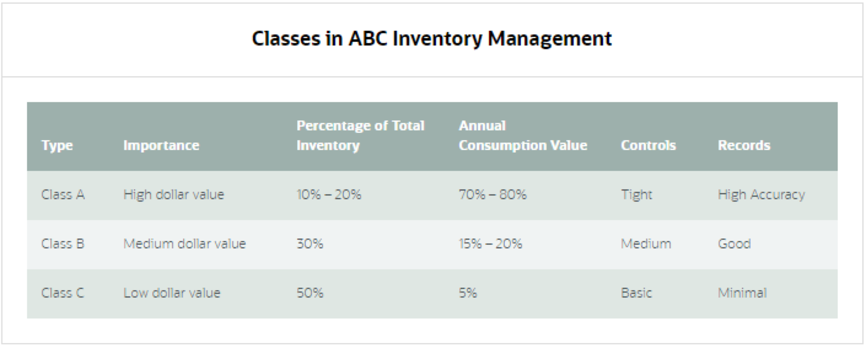
KOOL ASSET MANAGEMENT
SIMPLIFYING THINGS

Inventory management is a method of tracking the movement of inventory. It begins with the purchase of products and their warehousing and progresses to the outflow of raw materials or stock to enter the production units or the consumer, as necessary. The procedure may be carried out manually or may be automated.
When supplies arrive at the premises, warehouse control ensures that they are quickly received, counted, sorted, arranged, stored, and maintained, i.e. stock, raw material, parts, equipment, and so on.
Types of Inventory

Before you can approach good inventory control, you must first understand what inventory consists of. Here are a few details of the very different forms of inventory:
- Raw materials are the materials that you use to create your products.
- Unfinished products are work-in-progress that is not yet available for sale.
- Finished items that are usually stored in a factory before they are sold or delivered
- In-transit goods are those that have left the factory and are being shipped to their final destination.
- Cycle inventory refers to goods that are delivered to a company from a retailer or seller and then sold to consumers right away.
- Anticipation inventory, or surplus merchandise purchased in anticipation of a market boom
- Decoupling inventory refers to components, materials, or goods set aside in expectation of production slow down or halt.
- MRO materials, which stand for "maintenance, repair, and operating materials," aid in the manufacturing process.
- Buffer inventory, also known as "safety storage," acts as a buffer in the event of an unexpected problem or the need for extra inventory.
Sorting the inventory allows you to see which objects belong to the same group and so handle them appropriately. For example, finished goods are handled differently compared to raw materials.
Why is Inventory Management important?
The importance of inventory management in any goods-based industry cannot be overstated, which is why inventory management improves operating performance and sustainability.
Without a clever solution, SMBs and businesses currently not using an appropriate inventory management system or even enterprise resource planning (ERP) will face an army of problems, including blown-out costs, lack of earnings, bad customer experience, and even outright disappointment.

Inventory management is important from a commodity standpoint also as it allows you to consider what supply you have on hand, where it is in your warehouse(s), and how it is going in and out.
Inventory management assists you in the following ways:
- Reduce cost
- Improve your client service.
- Prevent damage due to fraud, spoilage, or returns.
Stock management, in a wider sense, offers visibility into the financial position, consumer habits and desires, product and market prospects, future developments, and more.
Essential Tips for Effective Inventory Management
To handle inventory effectively, you must keep track of how often the inventory "turns," which means you must keep track of how often you sell the product in its entirety or its financial counterpart. You learn to buy exactly the right amount of replacement products when you calculate the number of turns you have each month. Inventory management keeps your spending on track and encourages you to handle your working resources more effectively.
- Examine the inventory you keep. If you are a manufacturer, you must have raw materials on hand to create your product. To sell finished products, you must have a sufficient stock of supplies on hand to satisfy the sales requirements.
- Keep an eye on industry dynamics. When any items are doing well, and others are not, take action to ensure that only saleable items are kept on hand. Remove Items from your warehouse that are obsolete.
- Determine how much inventory you need to have on hand. Remember the amount of storage space you have available as well as the cost of getting items shipped to you. If stocks are plentiful, have smaller amounts on hand. Think about whether you get bulk or delivery discounts on big orders.
- Determine a minimum stock size. When you hit that stage, reorder products to avoid running out of inventory. Know the reorder lead time and prepare for it when reordering products.
- Hold products shelved so that you can use FIFO warehouse control(first-in, first-out). This is particularly critical if the inventory is perishable.

- Keep track of the inventory by hand or through a computerized device. Also, keep track of the description, price, venue, and supplier for each object and keep track of the time it takes to reorder each piece. If you're doing it by hand, make a card for each product. Track goods using Radio Frequency Identification (RFID) technology and a computerized system. Take precautions to protect the inventory from robbers and shoplifters. Have an eye out for any signs of employee theft as well. Set RFID tags to sound a warning if they are moved by an unauthorized user. Place merchandise in a safe location with access restricted to only those people responsible for inventory management.
- Install point-of-sale (POS) technology on your cash registers to remotely log finished product transactions.
Some more ways to manage inventory are given below:
- Categorizing the inventory according to priority orders can help users understand which items they need to order more frequently and also according to items that are important for your business but cost more and move slowly.

It is generally recommended to group inventory into 3 categories: A, B, and C. Items in the A group are higher-ticket items that you don’t sell frequently. Items in the C category are of lowest costs and, therefore, tend to get sold very quickly. Items in B are the ones in between, i.e., they move faster than A but slower than C . A more careful approach to inventory management is given to class A items than the rest of the classes because of their value to the company - a mistake in handling class A inventory could be very costly.
- Businesses can effectively control inventory by monitoring units as they go through various operating phases. Often companies use part of their inventory to produce other items. Creating a framework for monitoring "work-in-progress" supplies enables companies to change order numbers before inventory runs out and delays production.
- Analyze supplier performance. An untrustworthy supplier will wreak havoc on your inventory. If you have a supplier that is often late with delivery or under-delivers on orders, it's time to take action. Discuss the problems with your supplier, figure out the root cause, and agree on an appropriate solution. Negotiate or prepare to change partners if you have unpredictable stock levels and you risk running out of the products as a result.
- Determine low-turn stock. If an item hasn't sold in the last six to twelve months, it's usually time to discontinue stocking it. You should also think of alternative options to get rid of the product, such as a special discount or promotion because excess stock consumes both room and money.
- Reduce the time it takes to fix equipment. A faulty piece of equipment can be very expensive. Monitoring critical equipment and the related components is essential to managing the life cycle of the system. Be prepared for complications before they occur. Hire a maintenance engineer to keep things running smoothly if the potential losses due to down-time are too high.
- Interact with an experienced stock controller. Stock management is used to indicate how much inventory you have at any given time, as it extends to all products from raw materials to finished goods. If you have a large amount of merchandise, you may need at least one dedicated person to be in charge of it. A stock controller handles all sales orders, collects deliveries, and ensures that everything arriving corresponds to what was ordered.
Inventory Management System

Inventory management programs are the process by which you coordinate all of the components involved in inventory management. It is the method of tracking supplies from one end of your supply chain to the other. Throughout, make sure you know what you have, where it is, and how to use it.
There are several options. No one solution will work for all companies. Each company has its own set of requirements and principles. However, automatic inventory systems are broadly classified into two types:
- Periodic Inventory Management Systems
- Perpetual Inventory Management Systems
The difference between Periodic and Perpetual inventory systems is that the perpetual system regularly updates the purchase and sale records, specifically impacting merchandise inventory and cost of goods sold, whereas the periodic system only records updates for inventory and cost of sales at scheduled times throughout the year.
The type of inventory management system you need would be determined by the nature of your company. The easiest way to achieve consistency in inventory control is to use a standardized approach. When you handle things haphazardly, you encourage a wide variety of issues.
Conclusion
Inventory management is a valuable tool for streamlining all of the organization's warehousing operations. Through this strategy, the business can efficiently view and assess its stock and inventory, allowing all business processes to run more smoothly.
It has also proven to be an effective tool for meeting working capital requirements.
Latest Articles


